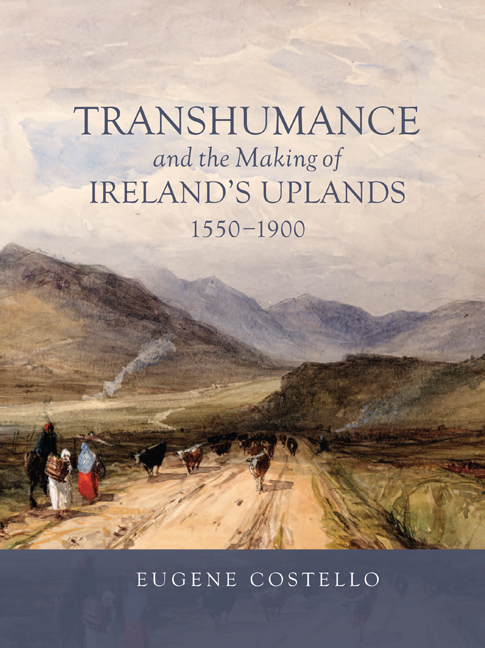Book contents
- Frontmatter
- Contents
- List of Illustrations
- Preface and Acknowledgements
- Note on Chronology
- Introduction
- Chapter 1 Seasonal Movement and Settlement in A World of Pastoralism
- Chapter 2 Imagining Movement: Past and Present Views of Transhumance in Ireland
- Chapter 3 Seasonal Sites in Context: Summer Pastures of the Carna Peninsula
- Chapter 4 Connected Places: Home and Booley in Gleann Cholm Cille Over Time
- Chapter 5 Altitude and Adaptation: Evolving Seasonal Settlement in the Galtee Mountains
- Chapter 6 Herders and Historical Forces, 1600–1900
- Conclusion
- Bibliography
- Index
Chapter 2 - Imagining Movement: Past and Present Views of Transhumance in Ireland
Published online by Cambridge University Press: 01 October 2020
- Frontmatter
- Contents
- List of Illustrations
- Preface and Acknowledgements
- Note on Chronology
- Introduction
- Chapter 1 Seasonal Movement and Settlement in A World of Pastoralism
- Chapter 2 Imagining Movement: Past and Present Views of Transhumance in Ireland
- Chapter 3 Seasonal Sites in Context: Summer Pastures of the Carna Peninsula
- Chapter 4 Connected Places: Home and Booley in Gleann Cholm Cille Over Time
- Chapter 5 Altitude and Adaptation: Evolving Seasonal Settlement in the Galtee Mountains
- Chapter 6 Herders and Historical Forces, 1600–1900
- Conclusion
- Bibliography
- Index
Summary
PASTORAL MOBILITY IN MEDIEVAL AND EARLY MODERN IRELAND: PERCEPTION VERSUS PRACTICE
There are indications of transhumant movements taking place from the early medieval period onwards in Ireland, though historical references to that effect are few in number and sparing in detail. Two glosses (annotations) on a seventh-/eighth-century Old Irish law tract explain that it was customary to go ‘out about May Day from the green of the old senlis [winter residence] to a summer pasture’ and, about November Day, to return from the grassland to the old residence (Neilson Hancock 1865, 132). It is difficult to tell how common such practices were and what social underpinnings they had, though a more detailed later text hints that relatively long journeys could be undertaken by pastoralists.
A farmer of 100 cows named Dima is said in an eleventh-century Life of Saint Cóemgen to have brought his animals and children on a grazing circuit (ar cuairt bhuailteachuis) to the Glendalough area of the Wicklow Mountains, where the cows were grazed in woodland and milked by herdsmen (Plummer 1922: 153–4). With his cows lactating, it seems likely that Dima's grazing circuit took place over the summer, so as to take advantage of the seasonal pastures available in Wicklow's uplands. Dima and his 100 cows were probably not alone in undertaking this journey: an Old Irish law text cited by Kelly (1997, 44) refers to cattle grazing freely on mountain land as a general entitlement. Given that Dima is said to have come all the way from Mide, a kingdom some 40km north-west of Glendalough at its closest (and over 100km away at its farthest), the benefits of this free summer grazing must have been worth the risk for strong farmers with dairy cows.
For its unusual richness, and because it is the first documentary instance of the word buailteachas – now the standard term in Irish for booleying (Ó Dónaill 1977, 153) – the story of Dima stands out as the most significant historical evidence of transhumance in medieval Ireland. When other snippets of information are taken into consideration (O’Rahilly 1946, 24; Lucas 1989, 58–67), it becomes clear that summer grazing on land outside core settlements was important from at least the late first millennium AD in Ireland.
- Type
- Chapter
- Information
- Publisher: Boydell & BrewerPrint publication year: 2020



